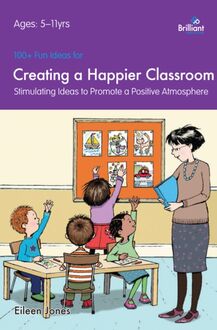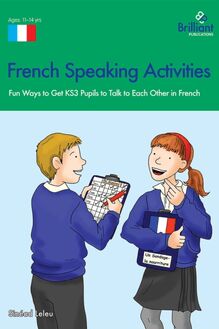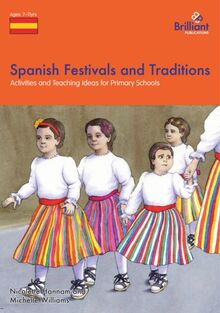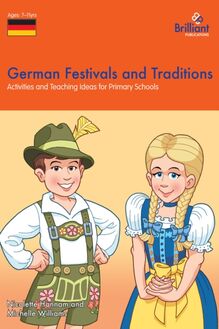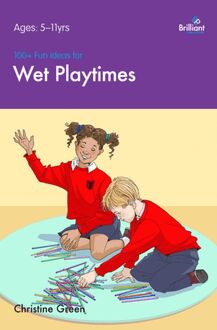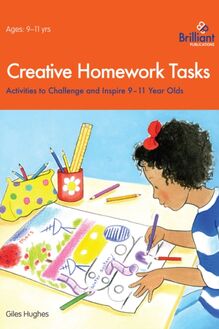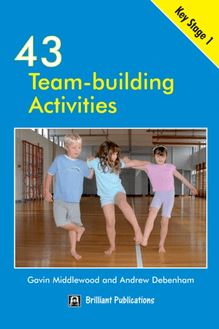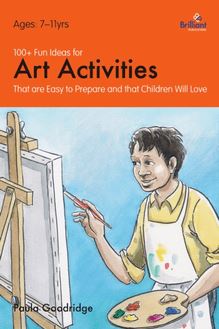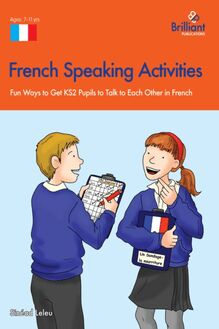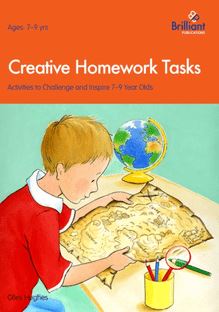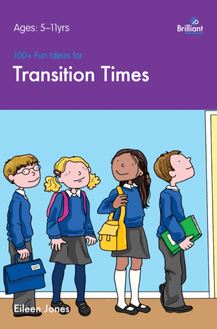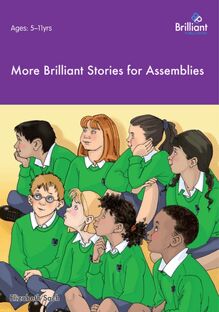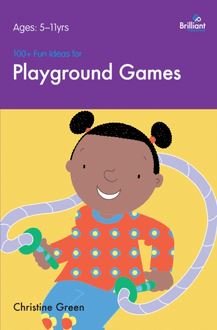100+ Fun Ideas for a Happier Classroom , livre ebook
128
pages
English
Ebooks
2012
Vous pourrez modifier la taille du texte de cet ouvrage
Obtenez un accès à la bibliothèque pour le consulter en ligne En savoir plus
Découvre YouScribe en t'inscrivant gratuitement
Découvre YouScribe en t'inscrivant gratuitement
128
pages
English
Ebooks
2012
Vous pourrez modifier la taille du texte de cet ouvrage
Obtenez un accès à la bibliothèque pour le consulter en ligne En savoir plus
Publié par
Date de parution
13 avril 2012
Nombre de lectures
10
EAN13
9780857475343
Langue
English
Poids de l'ouvrage
1 Mo
Publié par
Date de parution
13 avril 2012
Nombre de lectures
10
EAN13
9780857475343
Langue
English
Poids de l'ouvrage
1 Mo
Title Page
100 + Fun Ideas
Creating a Happier Classroom
Stimulating Ideas to Promote a Positive Atmosphere
Eileen Jones
Copyright Page
Published by Brilliant Publications
Unit 10, Sparrow Hall Farm
Edlesborough, Dunstable
Bedfordshire, LU6 2ES, UK
e-mail: info@brilliantpublications.co.uk
Website: www.brilliantpublications.co.uk
Digital edition converted and distributed by
Andrews UK Limited
www.andrewsuk.com
The name Brilliant Publications and the logo are registered trademarks.
Written by Eileen Jones
Illustrated by Carol Jonus
© Text Eileen Jones 2010
© Illustrations Carol Jonus
© Design Brilliant Publications 2010
First printed and published in the UK in 2010
The right of Eileen Jones to be identified as the author of this work has been asserted by herself in accordance with the Copyright, Designs and Patents Act 1988.
All rights reserved. No part of this publication may be reproduced, stored in a retrieval system or transmitted in any form or by any means, electrical, mechanical, photocopying, recording or otherwise, without the prior written permission of the publisher
Preface
This is a book crammed with stimulating ideas for the important, yet often ignored, element of your classroom - its atmosphere. This book considers the impression your room makes on the children. As the intangible element in a teacher’s planning, it is usually the most difficult. It involves putting yourself in the place of others, and recognizing what your classroom looks, feels and sounds like.
This book helps you tackle the task of creating and communicating the impression you want of a calm, happy classroom. The activities here are chosen carefully, with the children’s likely needs in mind. Nevertheless, you are the expert on your class. You know what will be of most benefit now - at this stage of their school career, term, week or day. So use the chapter headings, to match suggestions to your current needs, and select what you want, when you want it.
The aim of these ideas is to help the children feel confident about coming into the classroom and happy about returning to it. So the activities are enjoyable. They are also effective, holding the children’s interest, while fostering important attitudes: self-confidence positive attitudes team-work linking school with home
The resources recommended are trouble-free, and simple adaptations from other resources will often lead to a second activity. So be smart: when you make a resource, save it as hardcopy or on an interactive whiteboard file. That way, activities can be repeated or easily altered. Finally, remember to have fun!
Chapter One: Feeling Welcome
Feeling welcome is the basic building block for a happy classroom. As you aim to give every child this feeling, compare your task to throwing a successful party and tackle it in three stages: get the room right make everyone feel at home get people mixing
Is the room right?
Begin to answer this by spending five minutes on First impressions (Activity 1). What will children see as they arrive? What could you improve? Remember the effect of physical surroundings on mood. Old furniture or drab decoration are beyond your control, but an inviting layout and colourful cushions will make a welcoming difference.
Do children feel at home?
Find out! Have fun by holding half-termly Grand designs competitions (Activities 14 and 15), and learn what changes the children would like. Make the room seem safe and friendly by creating special areas and mini-environments, so that shy children are not overwhelmed by one large space.
Are they getting on?
Feeling welcome depends on other people. Help newcomers learn names through Watch the birdie! (Activity 6). Improve class integration by playing What shall we talk about? (Activity 17) and Pleased to meet you (Activity 18). Help children make friends by teaching appropriate body language: mutual smiles will lead to a happier classroom where everyone feels welcome.
1. First impressions Leave your room, close the door and walk away. Then turn round and walk back slowly. As you near the door, jot down words to describe what you see and feel about the room you are approaching. Stop at the door and review your notes. Consider cosmetic treatment. For example, replace your name on the door by a smiling photograph and a friendly message (Hello, I am ...). Repeat the experiment on the cloakroom, often children’s first point of arrival. Regular changes of cartoon pictures at their pegs will inject fun into their day’s start. Keep a laminated stock of these cartoon characters and funny scenes.
2. Come on in! Think about your last full day’s course and picture the room you were in. List features you found: Unwelcoming Welcoming Apply the lists to your classroom. Could you overcome gloominess with bright posters? What about draped material and large cushions in a drab library corner? Will re-arranging furniture reduce forbidding formality? Surprise the children with regular changes and keep the classroom an exciting place to come into. See also Making changes (Activity 8).
3. Small is beautiful Think where you sat in the staff room when you were new - probably a corner that looked small, safe and friendly! Create inviting mini-environments within your classroom. Areas could range from a sand tray, a water area, a tactile table, a number corner, an ‘imagination stage’ with props and regularly-changing background, to a computer area, a cosy reading spot and a research section of non-fiction books. Change the activities in these environments regularly and incorporate them into lesson group work.
4. All about me Make the children feel more comfortable/at ease with you by creating a poster about yourself. Use pictures and words. Talk about yourself, your family, friends and interests. Include points they can relate to, such as a photograph of you with your pet. The information will make you a more approachable figure.
5. Meet and greet Convert your classroom into a hotel and appoint yourself the doorman! (Younger children will love the idea of you in your uniform, hat or jacket.) Be ready at the door as children arrive in the morning. Meet and greet with a smile of welcome. Direct the children to an interesting feature in the ‘hotel’ (perhaps a new display) or ‘hotel amenities’ for them to use (work ready on the whiteboard). For children who find the home to school transition difficult, this make-believe situation will be a welcome distraction.
6. Watch the birdie! Gain permission from the school and the children’s guardians to take photographs. Photograph each child individually, reminding them to smile for the birdie! Use the pictures for a cheerful and friendly ‘Welcome’ display near the door. Let the children attach their names so that class newcomers can quickly learn who’s who.
7. Read all about me! Ask the children to write a short piece about themselves. Encourage them to mention what they enjoy doing at playtime and in their spare time. Suggest they include details of their hobbies and illustrate their writing with self-portraits that reflect their interests, for example wearing a football shirt or Brownie uniform, or gripping a table tennis bat. Hold a ‘Read all about us!’ display day where the children compile group newspapers, perhaps using computers and photocopied/scanned photographs of themselves. This could be a good way for pupils to identify fellow children they could link up with at playtime.
8. Making changes Select a section or mini-environment within the classroom (See Come on in and Small is beautiful (Activities 2 and 3). Give responsibility for that environment to a selected group of children for one week. Place an emphasis on it being welcoming. Emphasize that you want it made more appealing. Give them access to a variety of cheerful items, such as potted plants, cushions, happy/smiley faces, balloons etc. Wait to see what changes they implement. On Friday, ask the rest of the class for constructive comments about their experience of the environment.
9. Read me Display two lists of adjectives, entitled Good mood and Bad mood. Ask everyone to secretly select an objective from one of the lists. Put the children into pairs. When you say ‘Freeze’, one partner from each pair should strike a pose to fit their chosen mood. Take it in turns. Can the partners recognize whether it is good or bad? Can they recognize which adjective it is? Continue playing, with partners making new selections. Encourage partner discussion about the reasons for guesses. Finish with everyone reverting to their normal look. Do partners think they look in a good or bad mood? Suggest they always practise looking as if they could go on the good list (perhaps with a new adjective). They will feel better and the room will look a happier place!
10. Vote me happy Ask the children to make two voting cards: a large green YES and a small red NO. Explain that you hope to win plenty of YES votes. Gesture or adopt a silent pose. Ask them to decide if you look happy and hold up their voting cards. After each vote, ask individual children to justify their vote. What was wrong with your silent language? Let volunteers take your place. Who does well in the happiness election? Finish
